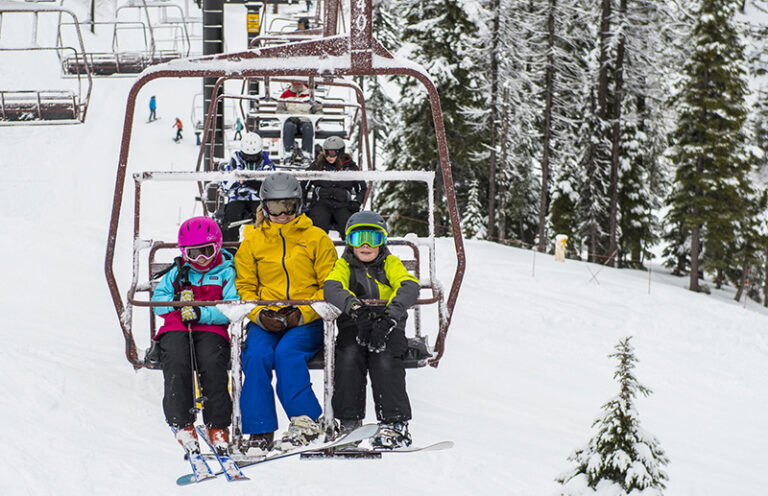The idle railroad tracks serve no purpose now except the one for our group this day. Very little traffic was passing by and yet two people pulled over to satisfy their curiosity.
“Are those bicycles? You ride them on the railroad? That’s so cool. I’ve never heard of that before.”
Neither had I.
Michael Conley, owner of North Division Bicycle Shop, has been rail biking for about sixteen years. He donates a ride to the Bicycle Alliance of Washington where it’s auctioned off to raise money for cycling related advocacy. The highest bidder wins two days of riding for two. Jeff Loomis, of Seattle, won the auction and brought his dad, Jim, up from the Tri-Cities. Along for his second ride ever was Bob Rohde (ro-dee) of Wilbur, Washington. Bob is an avid cyclist who, after hearing about rail biking, tracked down Michael through the Internet. Pat McPhelan, Bob’s friend, came all the way from Vancouver Island, Canada. As a child he was intrigued by a magazine showing a bicycle riding on a railroad track. Now in his 60’s, this is something he’d been dreaming of doing for a lifetime. Mont and Andena Hibbard of Lewiston, Idaho have 13 years of experience with their side-by-side rail bike.
We each signed the waiver and Michael received the track warrants, which are permission slips that state the dates, times, and mile marker limits of the track we could be on. While Mont and Andena assembled their rig, Michael showed the rest of us how to affix the runners and outriggers to the six other bikes and safety pin them in place. Then we loaded up our gear. Coolers and packs were strapped or bungee corded into place. Unlike normal cycling, weight is not an issue. Mont and Andena hauled the chain saw should we come across a fallen tree. A chain saw on a bike ride. That was a first for me.
Does rail biking give you a workout? It’s possible. The track we rode had a very gentle climb for the first couple of miles. As we rounded a bend, I spied a shady area ahead and asked if we could stop there. I wanted to set the video camera on the track and get shots of the bikes rolling over it. I stepped off my bike, walked around to the front of the group, and set up the camera. When I returned to the end of the line, something was wrong.
“Where’s my bike?”
Then I remembered we were on a grade. I looked at the empty track disappearing through the trees behind us, shook my head in disbelief, and started running. After rounding the bend I saw the bike in the distance, the sun glinting off the pedals as they spun backwards. I grabbed the handlebar a quarter of a mile later. If bikes could laugh this one would have complained of stomach cramps. I rejoined the group and was informed that the strap hanging on my handlebar is used to set the rear brake and prevent the bike from rolling. So, yes, I got a workout. And it was pretty funny.
What is riding on the railroad like? It’s surprisingly easy given that a bike and gear could weigh in at 60 or more pounds. There are no hills. Well, no steep hills. If you’ve been on the Hiawatha Trail, it has a two percent grade. Now imagine riding that on rails where there’s no rolling resistance. It’s a very smooth and quiet ride punctuated by a mild click-click as the wheel guides pass over the rail joints. As a bonus, the remoteness provides an opportunity to see wildlife. I rode ahead of the group looking for a place to take pictures. When I stopped, my brake squeaked. The noise startled three moose in the brush below me. They took off in a fright, and it sounded like they were destroying everything in their path as they ran away.
Along with setting the rear brake for parking, I had to remember to use it for stopping. The front wheel on these bikes is resting on a guide. Twice I ran into a bike ahead of me because I squeezed the front brake out of habit. Another lesson learned.
The bikes we were riding, including the Hibbard’s side-by-side, were built by Whitey Hartman, of Clarkston, 12-16 years ago. Whitey, 82, said he made his first bike for a friend using plans the friend provided. Both wheels rode on the track, a guide protruded out front, and an outrigger rolled on the opposite rail. Unfortunately, that design allowed the front wheel to slip off the rail, which could send the rider tumbling to the ground. Whitey put the guide under the front wheel and he’s proud to say his bikes are safer and faster than that first one.
The logistics of rail biking can be very demanding, but I thought it was worth the serene and peaceful ride. You can learn more about rail biking using any search engine. Please remember that railroad tracks are private property. For your safety do not ride on them without permission. Watch a video of the ride here: http://vimeo.com/68490046













